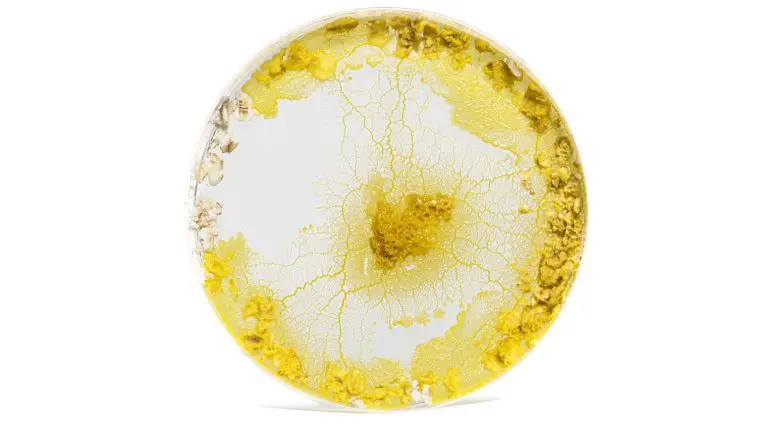[Originally published in 2014 as Even More on Slime Molds]
I recently ran across a study that goes well with two other blog posts I have written (here and here), although it is now decades old, I thought I would go ahead and write about this one as well. In the experiment, the authors studied a slime mold (Physarum polycephalum) that was in its plasmodium stage. During this stage of its life, it is a huge, single cell that has thousands of nuclei.
The researchers grew the slime mold on a maze. Once it had covered the maze, they put out some food in the form of nutrient-rich agar. They put one source of food at the beginning of the maze and another source of food at the end. There were four paths through the maze that connected the two food sources. In a mere four hours, the slime mold had built connections between the two sources using all four of the paths (as shown in the middle of the image above). However, in another four hours, it had worked out the shortest of the four routes (as shown on the right of the image above), and that’s the only one it maintained.
Now as I pointed out in my other two posts about slime molds, these organisms are thought to be “primitive,” because they are thought to have evolved long ago, even before plants and animal evolved. Nevertheless, when presented with puzzles, they are able to solve them. In fact, in one of the previous studies I wrote about, it was suggested that these “primitive” organisms could help us design better networks. Based on the results of this study, such networks would probably be very efficient.
In my high-school biology course, I stress over and over again that there is no such thing as a “simple” organism. The more we study nature, the more clear that becomes.
[Editor’s note: here’s a fun video showing the same kind of activity:]





